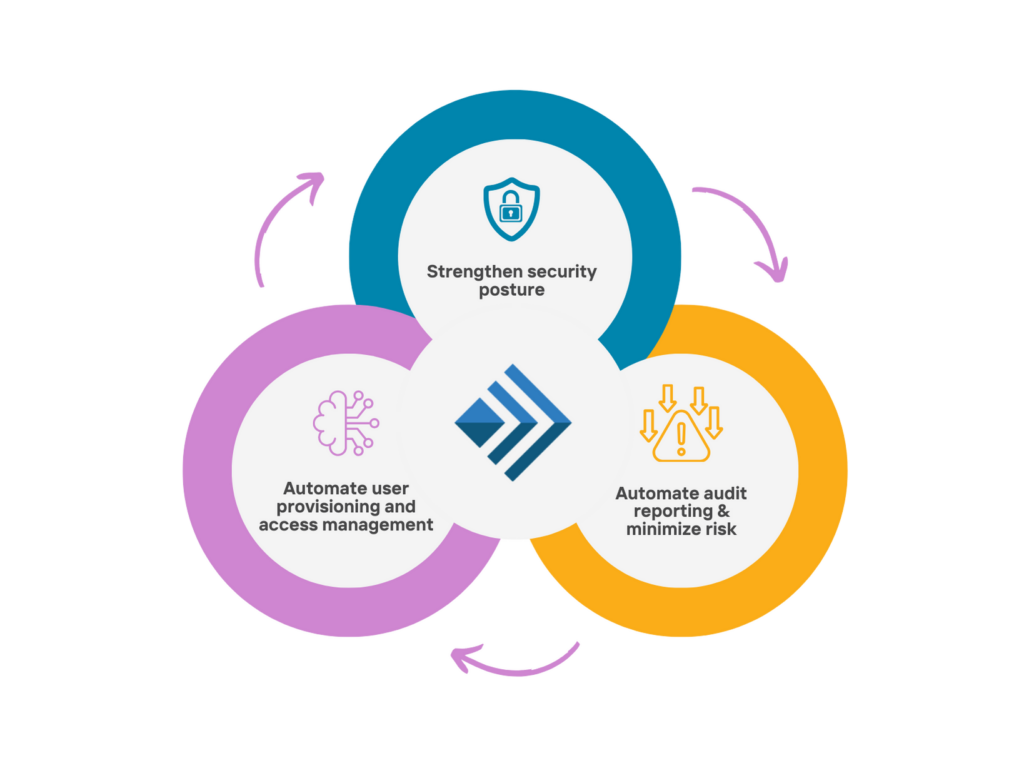
Your users are the weakest link for exploitation by cybercriminals to gain access to your most valuable asset: your protected data. If you wish for your users to engage in best practices for identity-awareness, explain the following to them. First, what they know as “their account” is part of a larger snapshot of their digital profile. Second, this snapshot consists of their personal details, private access keys, and the privileges those two factors grant them within your system. Finally, point out that this identity does not belong in the hands of people seeking to exploit them.
Despite this simplicity, too many employees, customers, and partners are not identity-aware.
Modern enterprises compete in a world where agility and innovation are the name of the game. This challenging environment demands that these organizations find new ways to leverage technology and automation. They do this not only to stay relevant, but also to differentiate themselves from laggardly competition. Cybercriminals exacerbate this transformative and disruptive change by silently preying on a multitude of unmanaged and unsecured resources. These cybercriminals don’t just hack through your firewall to gain entry to your infrastructure. They have found another, easier path in – your users.
Users Hold the Keys to Your Data
According to the 2021 Verizon Data Breach Investigations Report, inside actors cause 36% of data breaches. A 2020 Security Intelligence study further corroborates this finding. However, it is not productive to start suspecting every employee within your organization. While a healthy paranoia is a boon to cybersecurity, taking this too far can be counterproductive to the efficiency of your users. In this context, “users,” includes contractors, vendors, partners, and even bots (i.e. machine identities). Essentially, anyone or anything who accesses any part of your network is a potential vector and should be authenticated.
Cybersecurity regulations and mandates represent ongoing efforts to hold organizations accountable when it comes to securing sensitive information. As a result, organizations must satisfy these parameters in their approach to IAM security and IT. However, this requirement becomes more difficult when enterprises continue to use legacy and proprietary systems.
Enterprises attempt to comply with these standards even while adopting new cloud technologies, expanding their attack surface with suboptimal integration. As such, securing a complex and hybrid environment that includes a distributed workforce becomes a daunting task. However, organizations who are successful at addressing these challenges all have one thing in common: identity-awareness. By setting defenses around each individual identity, rather than relying on a traditional perimeter, enterprises enable better security and lower potential risk.
Identity-Aware Users are the Keystone to IAM Security
Identity management is key to ensuring a secure, compliant, and efficient infrastructure. Any human user or machine identity with access to your network should be tightly managed and governed with the least privileged access possible. This helps mitigate the risk of a breach due to compromised credentials or even malicious intent. When identity drives the architecture of your IT and IAM security environment, users, administrators, and business leaders realize the benefits of an identity-aware infrastructure.
Users enjoy easy access to applications and higher productivity. Administrators gain enhanced visibility and finer control. Business leaders can expect lowered security risk and greater operational agility. This is made possible by an open identity platform that integrates and connects every identity, application, system, and file across your organization so access can be administered from a single pane of glass. This allows organizations to answer the 6 critical identity and access questions:
- Who has access to what?
- When did they get access?
- How did they get access?
- Who authorized their access?
- Do they have privileged access?
- Is the access periodically attested?
The ability to answer these key points is the hallmark of identity-aware organizations. A successful identity program relies on organizations defining and enforcing access policies. This enforcement must be contextual to IAM security and compliance requirements, providing the rules of access for everyday IT activities including:
- Automated provisioning and de-provisioning
- Request for access to additional applications, systems or file folders
- Catching access violations such as separation-of-duty
- Remediating suspicious access behavior
- Enforcing password management best practices
Identity-Awareness in System Architecture
In addition to enabling IT efficiencies, identity also enables a secure self-service environment for users. Automating repetitive helpdesk tasks, such as password resets, provides users with a secure and efficient way to reset their own passwords. Pre-defined identity-centric workflows allow streamlined access requests for new applications and file folders. This ensures all requests go to appropriate business owners for review and approval. This is all done according to policy and fulfilled in a secure and efficient manner while also documenting all activities (requests, approvals/approvers, and action) for compliance and reporting purposes.
Finally, as organizations incorporate identity management into the heart of their environment, they will realize the overall benefit that identity provides. This comes from sharing a rich identity context with all the IT and IAM security resources that are part of their identity aware ecosystem. Identity context includes rich and meaningful information such as the relationships that identity has with other aspects of the organization. These include resources and people, policies and specific controls, its current state, and a historical log of all activities. This information helps your IT and IAM security teams can make smarter recommendations and decisions around risk assessments for governance controls. In addition, identity context helps pinpoint risky behavior, allowing IAM security analysts to know where to devote attention.
Wherever you may be on your cybersecurity journey, it is never too late to start cultivating an identity-aware organization. Identity can help ensure your hybrid transforming environment is kept secure and compliant, while also incorporating automation and processes that lead to overall efficiency gains and cost savings.
Contact a Simeio IAM expert today and learn how to apply these valuable identity-awareness lessons to your own enterprise.
